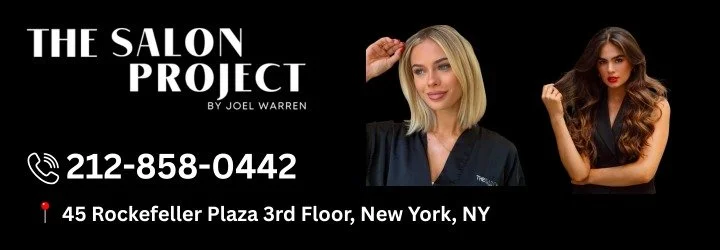Low Taper Fade Fluffy Hair: The Modern Style Redefining Men’s Grooming
Low taper fade fluffy hair has quickly become one of the most in-demand styles for men seeking a clean yet voluminous look. Low taper fade fluffy hair combines sharp edges with soft, airy texture, creating a balanced appearance that works for casual and professional settings alike.
Understanding the Low Taper Fade Fluffy Hair Trend
This style blends two major elements: the low taper fade and a fluffy, lightweight top. The taper fade gradually reduces the length around the sides and neckline, starting low near the ears for a subtle and polished effect. The fluffy top adds movement and character, providing fullness and dimension without looking messy. Together, these components create a modern look that feels fresh and effortlessly stylish.
Why This Style Has Become Popular
The appeal of this haircut lies in its versatility. It suits straight, wavy, and slightly curly hair and adapts well to different face shapes. Men appreciate the contrast between the clean, fade-focused sides and the voluminous upper section. This combination makes the style ideal for individuals who want a fashionable yet low-maintenance daily look. With a few styling products and the right cut, you can shift between a natural, laid-back texture and a more elevated, structured appearance.
How to Achieve the Perfect Low Taper Fade
A professional barber is essential for achieving clean lines and seamless blending. The fade should be smooth, starting very low and gradually increasing in length until it reaches the longer hair on top. Precision is key—any unevenness will disrupt the balance that makes this style appealing.
Once the fade is set, the focus shifts to creating fullness on the top. The hair should be cut in a way that encourages upward movement and texture. Layering helps maintain that soft, airy look associated with a fluffy finish. Blow-drying with an upward motion, using a diffuser, or brushing the hair back to create lift enhances the final result.
The Role of High-Quality Styling Products
Although the fluffy look appears natural, a few styling products can bring the haircut to life. Lightweight mousse, sea-salt spray, or volumizing powder are excellent choices. They provide hold without weighing the hair down. Cream-based products can also help define the texture while keeping the hair soft and touchable.
For individuals with thicker hair, a matte clay or styling paste can control bulk while maintaining volume. The goal is to preserve the airy, buoyant effect rather than flattening the hair. Regular trims ensure that the fade remains sharp and the top retains its shape.
Visiting The Salon Project by Joel Warren
To ensure the best results, it is ideal to visit a salon known for precision cutting and modern grooming techniques. The Salon Project by Joel Warren stands out as a destination for those seeking expert craftsmanship and personalized styling. Their stylists understand how to blend subtle fades with textured tops, making the low taper fade fluffy hair style look refined and balanced.
Whether you need a fresh cut, a shape-up, or styling guidance, the team provides customized recommendations based on your hair type and lifestyle. Their focus on detail ensures that your fade stays clean, your texture remains full, and your overall style looks polished every day. Clients appreciate the salon’s dedication to quality and the ability to adapt trending styles into wearable, long-lasting looks.
Maintenance Tips for Long-Lasting Results
To keep the haircut looking sharp, schedule touch-ups every two to four weeks. This prevents the fade from growing out unevenly and losing definition. Washing your hair with a lightweight shampoo helps preserve natural movement, while conditioning keeps the hair soft and manageable. Avoid heavy products, as they can collapse volume and reduce the fluffy effect.
Blow-drying with medium heat can restore lift between salon visits. Using a round brush or simply scrunching the hair while drying can refresh the shape. For additional texture, reapply a small amount of styling product as needed throughout the week.
Who Benefits Most from This Haircut?
The style works especially well for men who want a trendy yet balanced look. Those with medium-length hair on top and a preference for clean edges will find this haircut ideal. It flatters round, oval, and square face shapes and creates structure without being too bold. The airy, fluffy top softens sharp angles, while the fade provides definition.
Professionals appreciate that the style is modern yet suitable for formal environments. Students and younger men enjoy its trendy look and effortless styling. Because it adapts to various textures, it’s a great choice for many hair types.
How to Style It Daily
Start by slightly dampening the hair, then apply a volumizing product. Blow-dry upward to create lift, using your fingers for a natural finish. If you want more structure, lightly shape the front or fringe to add height. The key is to avoid over-styling—this look thrives on movement and soft texture.
A matte product can be used to refine the sides or add definition to the top. If your hair tends to fall flat, a small amount of powder can instantly restore volume. The result is a fresh, youthful appearance that holds throughout the day.
Conclusion: A Timeless Trend with Modern Appeal
The low taper fade fluffy hair style is a blend of sophistication and texture, making it one of the most balanced and wearable men’s hairstyles today. Its versatility, ease of styling, and ability to adapt to multiple hair types make it a reliable choice for anyone seeking a refreshed look. For the best execution, visiting professionals like those at The Salon Project by Joel Warren ensures that the cut is shaped flawlessly and tailored to your personal style. With the right care, this haircut remains sharp, voluminous, and stylish, solidifying its place as a standout grooming trend.




